The Vastaranta Research Syndicate is developing detailed forest remote sensing methods with an aim of enhancing ecological understanding and supporting sustainable use of forests.
The coronavirus pandemic has forced everyone, including forest scientists, to learn new routines both on and off duty. Hallway conversations now take place outdoors while riding a bike, people’s offices are scattered all across Finland, and all research visits abroad have been postponed to the future. Physical meetings have been replaced by virtual ones.
Yet, this hasn’t affected scientists’ passion for doing research.
“We want to work for a future where we understand forest ecosystem function so well that we can live in harmony with our environment in living and experience-rich societies,” Associate Professor Mikko Vastaranta says.
“This vision calls for sustainable use of natural resources, putting a stop to biodiversity depletion, and finding new business models. We also need societal structures that support equality, we need to manage climate change, and overall, we need a clean environment.”
This autumn, Vastaranta will launch a new research project that uses remote sensing to study wood density variation both within and between trees. With new technologies, scientists now have access to highly detailed information on trees. The project is being co-led by Research Professor Antero Kukko from the Finnish Geospatial Research Institute at the National Land Survey of Finland.
“Wood density measurements play a crucial role in the assessment of forest resources. This information is needed when refining wood and selecting an optimal target for its use as well as in the estimation of true carbon sequestration. Besides the species and genetics, wood density is also affected by tree growth and by various environmental and competition factors,” Vastaranta explains.
Thanks to laser scanning time series, these factors can now be observed in a new way. Trees can be monitored for changes in their stem shape, height growth and crown development. Scientists have already found preliminary links between crown properties and wood density.
“Novel sensors and algorithms make the measurement process highly automated. Of course, we haven’t gotten to the time series data just yet, but based on existing theories, we should expect to find completely new things.”
We can explain up to 40% of wood density variation by different crown characteristics.
Mikko Vastaranta
Associate Professor, Digitalisation and Knowledge Leadership in Forest-based Bioeconomy
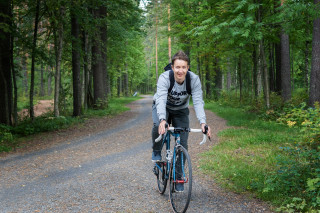
Mikko Vastaranta left the University of Helsinki in early 2018 to take up an associate professorship at the University of Eastern Finland. For the past five years, he has worked in the Centre of Excellence in Laser Scanning Research, CoE-LaSR, which also involves scientists from the University of Helsinki, the Finnish Geospatial Research Institute at the National Land Survey of Finland, and Aalto University.
Postdoctoral Researcher Samuli Junttila will launch a three-year, Academy of Finland funded project this autumn, seeking to explore the water dynamics of trees. The amount of water varies in different parts of a tree and on different scales, from individual leaves to a global level.
“Climate change also changes the water dynamics of trees. How this will affect vegetation and its viability is a key question. Longer periods of drought increase tree mortality everywhere in the world, and the loss of the biggest tree species is a particular concern,” Junttila says.
“In my project, I will be developing remote sensing methods that can be used to study these phenomena. I’m interested in water as a source of life: how that simple molecule circulates in the biosphere from soil to plants to the atmosphere, and then back again as rain. There is something very beautiful in the simplicity of water, but there are many processes relating to water dynamics that we don’t fully understand yet.”
“My goal is to widen the horizon from the level of individual trees and forest stands to larger areas, and thus find answers to global research questions.”
Different remote sensing technologies have great potential in solving many global mysteries.
Samuli Junttila
Postdoctoral Researcher
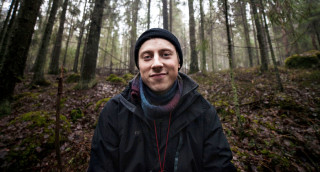
Samuli Junttila, in some circles also known as The Eastern Prof., is currently transitioning to the University of Eastern Finland from the University of Helsinki. Besides doing research, he is also interested in science communication and wants to make new openings on that front.
One such opening is his music video, which won the physics category of the Dance Your PhD contest organised by Science. The video helped Junttila to communicate the results of his PhD thesis in a manner that caught the attention of the largest TV channels and other news media.
“There is a lot to improve in the image of science and scientists. That requires active communication to people outside the scientific community.”
Postdoctoral Researcher Ninni Saarinen is currently running a three-year project funded by the Academy of Finland, focusing on how trees allocate their growth. She studies how different forest management practices, such as type and intensity of thinning, affect growth allocation and competition.
“The first results from my project support earlier findings which indicate that heavy thinning enables faster tree growth. Trees growing in areas that have been heavily thinned are larger than trees of the same age growing in denser areas.”
Saarinen uses terrestrial laser scanning, which makes it possible to identify new characteristics that can be used to monitor, e.g., tree stems and their shapes, in more detail than before.
“It is inspiring to use this technology in ecological applications and to better understand forest dynamics. My goal is to keep formulating new research questions, so that existing technology can be used to respond to new and increasingly complex challenges.”
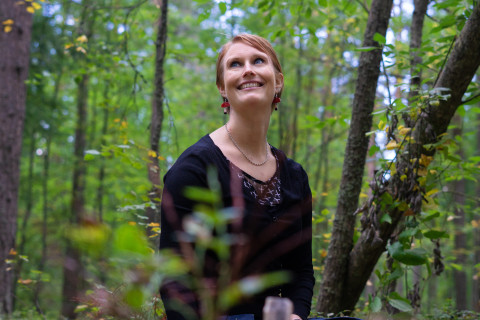
Early-Stage Researcher Tuomas Yrttimaa’s PhD thesis focuses on the development of methods that are based on detailed point cloud time series. They can be used for an increasingly accurate description of the spatiotemporal structure of forests, as well as for a better understanding of forest stand dynamics and forest ecosystem function.
“Terrestrial laser scanning technology makes it possible to discern the three-dimensional structure of an individual tree with millimetre accuracy, and changes in the tree’s structure can be monitored temporally. A better knowledge of how the structure of an individual tree develops enhances our understanding of the development of forest stands and forest areas,” he says.
“Our concrete work can be very minuscule on scale, for example observing the different structures of a tree from a point cloud. Behind that, however, there is a vision of a better understanding of our environment on a global scale.”
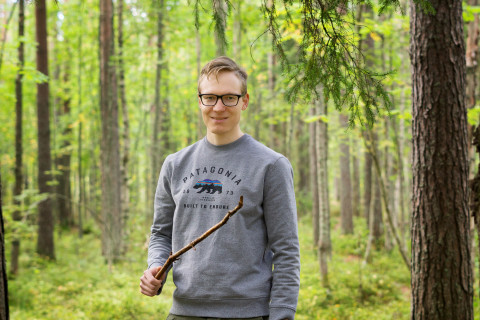
Postdoctoral Researcher Ville Kankare started working on a three-year project last year, exploring whether a tree’s natural growth allocation and detailed description of its external structure can be used to explain changes in wood density, or to understand differences between different tree species.
“I’ve been studying the association of wood density variation with branch structure. My first findings indicate that simple characteristics of the crown size, such as crown diameter and crown volume, can explain changes in wood density surprisingly well,” Kankare says.
“This is a very promising finding, since crown size characteristics can be calculated from, for example, airborne laser scanning data. In the future, data on wood density variation could be collected efficiently from large areas.”
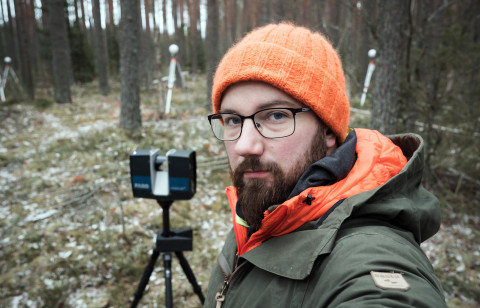
The younger generation is especially keen to debunk the myth of scientists who are buried under a pile of books in their office, all alone, and with no touch to the real world around them.
“That is certainly not true. Nowadays, junior researchers in particular are strongly encouraged to do networking and to find research partners. The Academy of Finland, for example, requires that researchers have a change of scenery after completing their PhD. Research visits have expanded my horizons and also my attitude towards doing research, and also towards how broadly different methods can be used,” Saarinen says.
“It seems that there is an increasing need for scientists in today’s world. Or at least for people who want to make things better,” Vastaranta says.
“A good goal for our work is to make us redundant. I wouldn’t be at all sorry if we reached our vision and I and my fellow scientists lost our jobs as a result. What people are really needed for, and what they continue to be needed for a long time still, is creative work. Would it even be possible that there no longer were demand for research? That we’d know everything and would no longer be curious?”
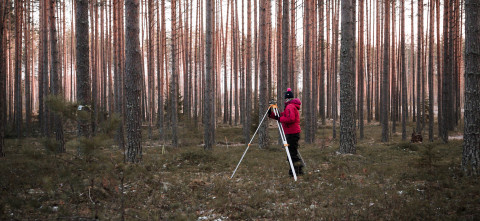
- Mikko Vastaranta Scholar Twitter: @MikkoVastaranta
- Ninni Saarinen Scholar ResearchGate Twitter: @ninni_saarinen
- Samuli Junttila Scholar ResearchGate Twitter: @SamuliJunttila
- Ville Kankare Scholar
- Tuomas Yrttimaa Scholar ResearchGate





